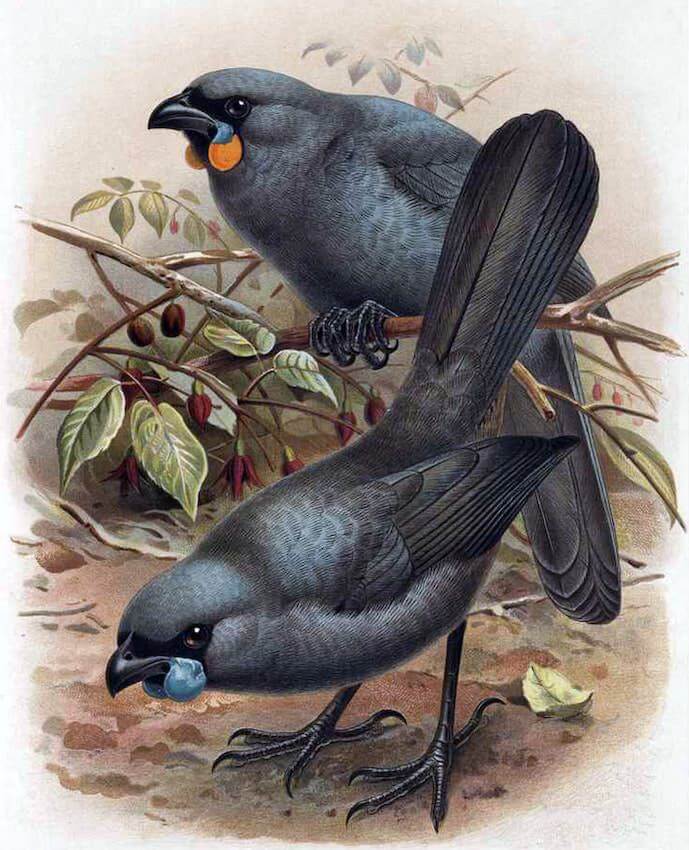Callaeas cinereus
2007
Illustration by J. G. Keulemans of a South Island kōkako, from W.L. Buller's A History of the Birds of New Zealand (1888) Source

Callaeas cinereus
2007
Illustration by J. G. Keulemans of a South Island kōkako, from W.L. Buller's A History of the Birds of New Zealand (1888) Source

Bos primigenius
1627
Illustration of an aurochs from Siegmund von Herberstein's Rervm Moscoviticarvm commentarij Sigismundi (1556) Source
Possibly extinct, this forest bird is endemic to New Zealand's South Island, notable for its black facial mask and orange wattles, the latter of which distinguish the kōkako from a North Island relative. Last sighted in 2007 --- the first authenticated observation since 1967 --- the bird's fleeting song was memorably described by Victorian colonial surveyor Charlie Douglas: Their notes are very few, but the sweetest and most mellow toned I have ever heard a bird produce. Males were known to perform an archangel display and collectives of kōkako were described in the second edition of Walter Lawry Buller's A History of the Birds of New Zealand (1888) as preferring to pass through forests on foot, in groups as large as twenty, like a flock of sheep: if the first bird should have occasion to leap over a stone or fallen tree in the line of march, every bird in the procession follows suit accordingly! The kōkako's range was initially impacted by Polynesian forest management, further reduced by the clear-cutting practices of European settlers as well as the introduction of mammalian predators such as ship rats in the 1860s and stoats in the 1880s. Māori traditionally hunted the bird, and it was poached by settlers for sale to collectors and museums in the nineteenth century.